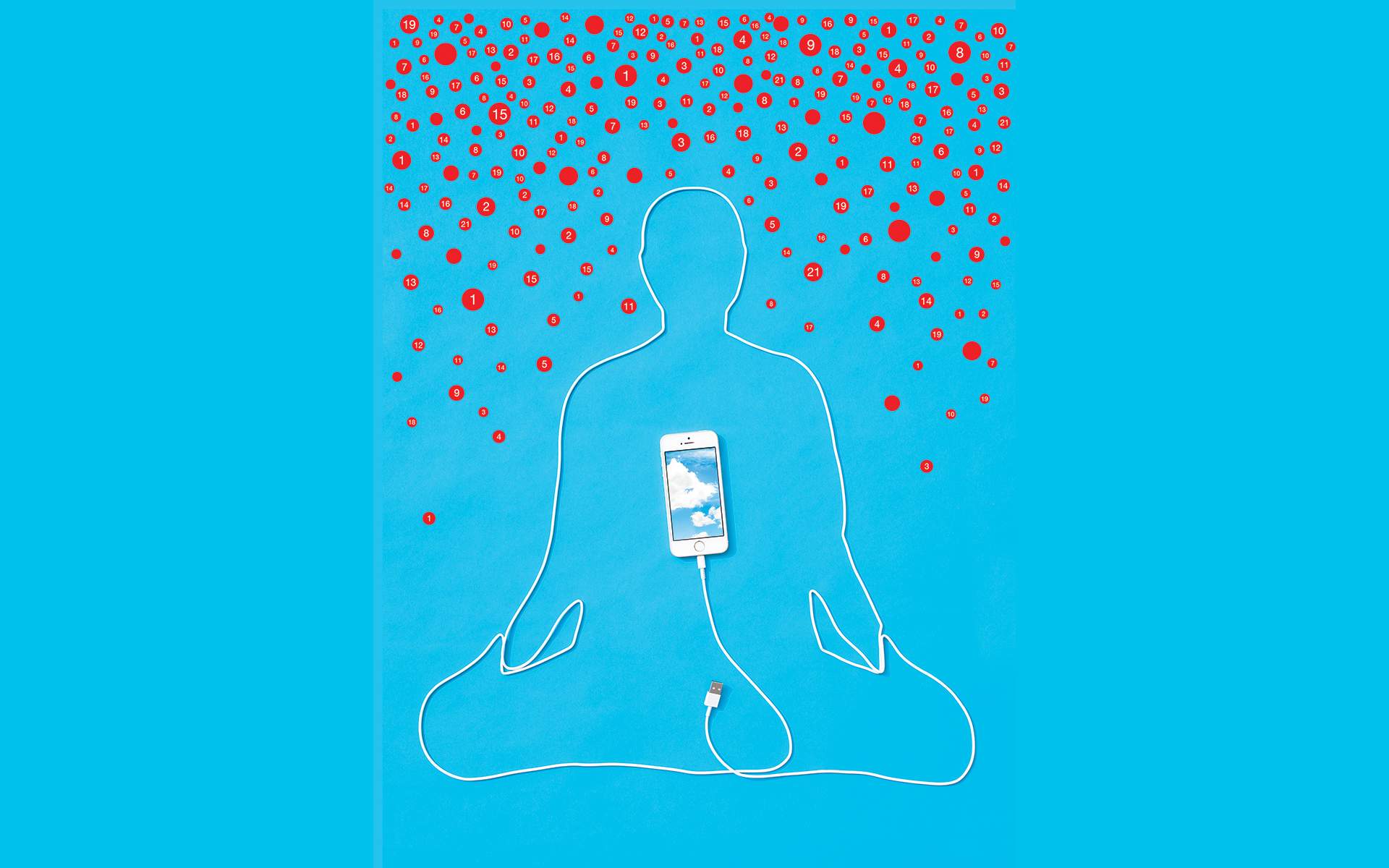I just set my phone down to write this post, but thankfully and notably, it’s well within arm’s reach. As a psychologist, therapist, and parent, I consider the following to be of great concern:
- There is research suggesting that using cell phones for only a half hour a day for ten years doubles one’s risk of brain cancer.
- The soreness in our fingers and wrists from texting too much is so prevalent that the term “text claw” has entered our lexicon.
- “Problematic Internet Use” (PIU) is now considered a behavioral addiction, with almost half (48 %) of participants in one study considered “Internet addicts.”
- In her remarkable book, Reclaiming Conversation (2015), MIT professor Sherry Turkle discusses research pointing to how a quarter of teens in the US are connected to a device within five minutes of waking up each morning, and that most teens send at least one hundred text messages per day.
- Most alarming to me is Turkle’s citing of another scientific finding: That over the past 20 years our society has seen a 40% decline (most of it occurring over the past decade) in indicators of empathy in people, and that researchers are linking this trend with the rise of digital communication technologies.
A Practice to Be Mindful with Your Phone
This practice is about opening up to our experience of how we make use of this piece of powerful technology. Instead of closing down our awareness and letting this device’s screen become a “rabbit hole” that we fall mindlessly into, are we willing to make a habit of seeing the negative states it can draw out of us.
Again, smartphones (and the Internet, social media, and other digital technologies) aren’t inherently “bad.” They are, however, dangerously addictive. Sure, guns don’t pull their own triggers, and lines of cocaine don’t march up peoples’ noses unbidden, and yet somehow we typically know it’s not wise to place either in a young child’s unsupervised and unaware hands. Somehow we’re not so careful when it comes to our digital devices.
Are we willing to make a mindfulness practice out of the very thing which seems to be pulling us toward dangerous degrees of mindlessness? Pick up your phone and try the following:
- Sit comfortably, in an upright posture, with your phone (yes, I’m assuming you have one—if you’re reading this blog, there’s a very good chance you do!) in the palm of your hand which you can rest gently on your lap. Keep your eyes open for this meditation.
- Turn your phone on, but do not open any particular app. Just let your thumb hover over top the screen.
- Take in a full, deep breath into the belly. Let yourself feel the nuances of how the breath enters and leaves the body. For at least a couple of minutes or more, practice mindfulness of the sensations of your breathing. Simply place your attention (even though you’re looking at your phone) on the feeling of your breath coming in and out (without breathing in any particular, controlled way). If your mind drifts away (particularly to any of the things I’ve listed below), just gently bring awareness back to the breath.
- Notice any of the following, and if they arise, just gently label them as either a want, frustration, restlessness, fatigue, or a sense of doubt and come back to being aware of how your breath feels. See if you can keep your awareness lightly connected to the sensation of the breath, and simultaneously see if you can notice any or all of the following if they happen to show up:
- Is there any impulse drawing your thumb of finger to open an app, check email, or some other aspect of your phone? Is there a want showing up in you—a sense of being pulled toward something? Get curious as to what this want, this desire, actually is in this moment. What are its components in your mind and bodily sensations? Notice the pull and see if you are willing to just ride the impulse without following it. Is this want actually the driving need it seems to be? . . .
- Come back to noticing the breath, and silently ask: Is there something about looking at your phone that stirs frustration, angst or even anger? Are you reminded of someone or something that feels worthy of blame? Are you feeling frustrated over not immediately opening and using your phone? Can you just notice all that’s showing up right now?
- Come back again to the sensation of the breath and ask: Is there anything about looking at your phone (and not sending your fingers flying as is your habit) that worries you? Is there an internal itch—a restless, crawling feeling? Label this as “restlessness” and watch the energy as it moves through mind and body. Just let it be. Does it change or stay the same?
- And back to the breath yet again and see if: As you hold your phone, do you notice any sagging, depleted, or dull feelings? Is there a fatigue that sets in as you just sit looking at your phone, trying to keep awareness on the sensations of breathing?
- And one last time, come back to the sensory details of your breathing. Really look at your phone and wonder: Does looking at this small object cast any doubt on how you manage your daily life, your attention? How does this small, thin rectangle make you feel about yourself, and your sense of control over your life? See if you can just stay with these thoughts and the feeling they’re joined to in the body and let them be. Can you see them as the mere story, the scripted narrative, that they really are?
Changing Our Relationship to Smartphones and Avoid Phone Addiction
As we get more connected to our wireless technology, we appear to run the risk of damaging our brains’ wiring, phone addiction, and disconnecting from the face-to-face interaction that our social and psychological systems need. With its emphasis on harnessing attention with intention (i.e. redirecting it on purpose), mindfulness—with all its scientifically-established health and well-being benefits—has the potential to keep us from drifting hopelessly away from one another.
Perhaps it can keep us connected, even though we might only be feet away from one another as we tap out texts, emails ,or check up on our “social” life on social media. In addition, it might help us stem the tide of our ever-ebbing attention spans. It’s because of our MTV (for me in the past) and tweet-truncated capacities for focused attention (for the youth I work with as a therapist now), that I’m learning to keep my blog posts brief—particularly this one. I want you to actually read (and apply something to your life) from this.
I’m not saying we should all throw our phones in the trash, or that we should forgo Facebook or terminate our Twitter accounts. The technology may not be “evil” in and of itself. These devices and capabilities do bring incredible benefits and possibilities for sharing information and creating global interaction than ever before. We simply (and yet with great difficulty) need to learn to hold our technology more lightly—with more awareness. As I’ve considered this, I wondered if, in addition to the wealth of traditional mindfulness meditation practices, it might help if there was a practice specific to the phones we can’t seem to live without.
Consider going beyond any current practice of mindfulness you’ve incorporated into your daily life. Consider making your phone itself a cue for waking up instead of checking out to avoid phone addiction.
And feel free to ask my wife what she thinks of all this – particularly when she’s trying to get me to engage in a conversation about household logistics whilst my phone is open and casting its pale, zombified glow onto my face.
References
Aboujaoude, E. (2010). Problematic Internet use: an overview. World Psychiatry, 9(2), 85–90.
Shapira, N. A., Lessig, M. C., Goldsmith, T. D., Szabo, S. T., Lazoritz, M., Gold, M. S. and Stein, D. J. (2003), Problematic internet use: Proposed classification and diagnostic criteria. Depression and Anxiety, 17: 207–216.
Caplan, S.E. (2010). Theory and measurement of generalized problematic Internet use: A two-step approach. Computers and Human Behavior, 26(5): 1089-1097.
Sara H. Konrath, S.H., O’Brien, E.H. and Hsing, C. (2011)
Personality and Social Psychology Review, 15: 180.
read more
Can Your Smartphone Make You Mindful?
Meditation apps help users see mindfulness as part of their lives but they also run the risk of becoming just another tech habit.
Read More
5 Ways to Organize Your Phone to Unhijack Your Mind
Your phone was built to distract you. Here are a few simple things you can do from your home screen to create a more mindful experience.
Read More










